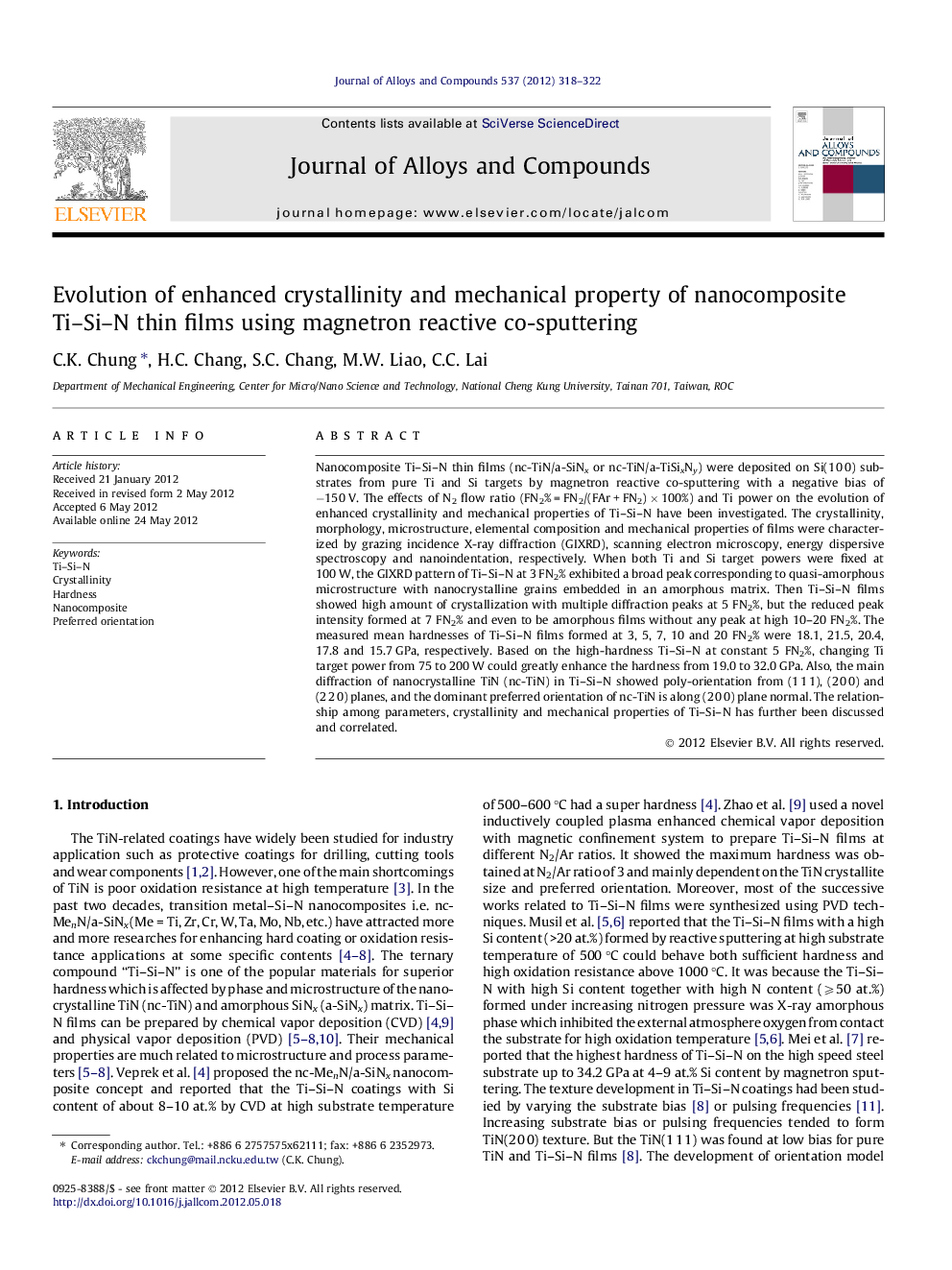| کد مقاله | کد نشریه | سال انتشار | مقاله انگلیسی | نسخه تمام متن |
|---|---|---|---|---|
| 1615854 | 1516356 | 2012 | 5 صفحه PDF | دانلود رایگان |

Nanocomposite Ti–Si–N thin films (nc-TiN/a-SiNx or nc-TiN/a-TiSixNy) were deposited on Si(1 0 0) substrates from pure Ti and Si targets by magnetron reactive co-sputtering with a negative bias of −150 V. The effects of N2 flow ratio (FN2% = FN2/(FAr + FN2) × 100%) and Ti power on the evolution of enhanced crystallinity and mechanical properties of Ti–Si–N have been investigated. The crystallinity, morphology, microstructure, elemental composition and mechanical properties of films were characterized by grazing incidence X-ray diffraction (GIXRD), scanning electron microscopy, energy dispersive spectroscopy and nanoindentation, respectively. When both Ti and Si target powers were fixed at 100 W, the GIXRD pattern of Ti–Si–N at 3 FN2% exhibited a broad peak corresponding to quasi-amorphous microstructure with nanocrystalline grains embedded in an amorphous matrix. Then Ti–Si–N films showed high amount of crystallization with multiple diffraction peaks at 5 FN2%, but the reduced peak intensity formed at 7 FN2% and even to be amorphous films without any peak at high 10–20 FN2%. The measured mean hardnesses of Ti–Si–N films formed at 3, 5, 7, 10 and 20 FN2% were 18.1, 21.5, 20.4, 17.8 and 15.7 GPa, respectively. Based on the high-hardness Ti–Si–N at constant 5 FN2%, changing Ti target power from 75 to 200 W could greatly enhance the hardness from 19.0 to 32.0 GPa. Also, the main diffraction of nanocrystalline TiN (nc-TiN) in Ti–Si–N showed poly-orientation from (1 1 1), (2 0 0) and (2 2 0) planes, and the dominant preferred orientation of nc-TiN is along (2 0 0) plane normal. The relationship among parameters, crystallinity and mechanical properties of Ti–Si–N has further been discussed and correlated.
► The TiN-related hard coatings encounter poor high-temperature oxidation resistance problem.
► The transition metal–Si–N nanocomposites have used for enhancing hard coating applications.
► The effect of process parameters on Ti–Si–N microstructure and property was studied.
► The orientation model for texture development of TiSiN is used for deeper discussing.
► Both Ti–Si–N microstructure and texture are crucial factors for hardness enhancement.
Journal: Journal of Alloys and Compounds - Volume 537, 5 October 2012, Pages 318–322